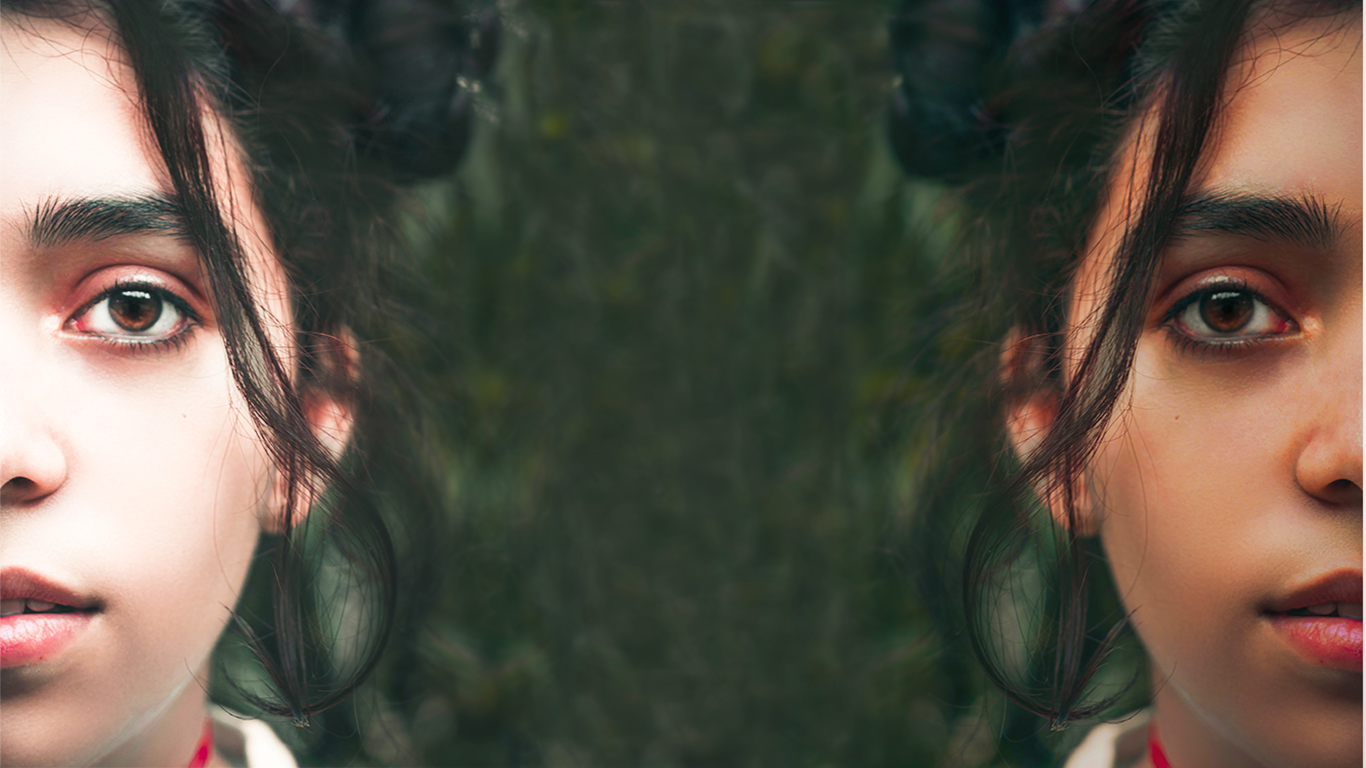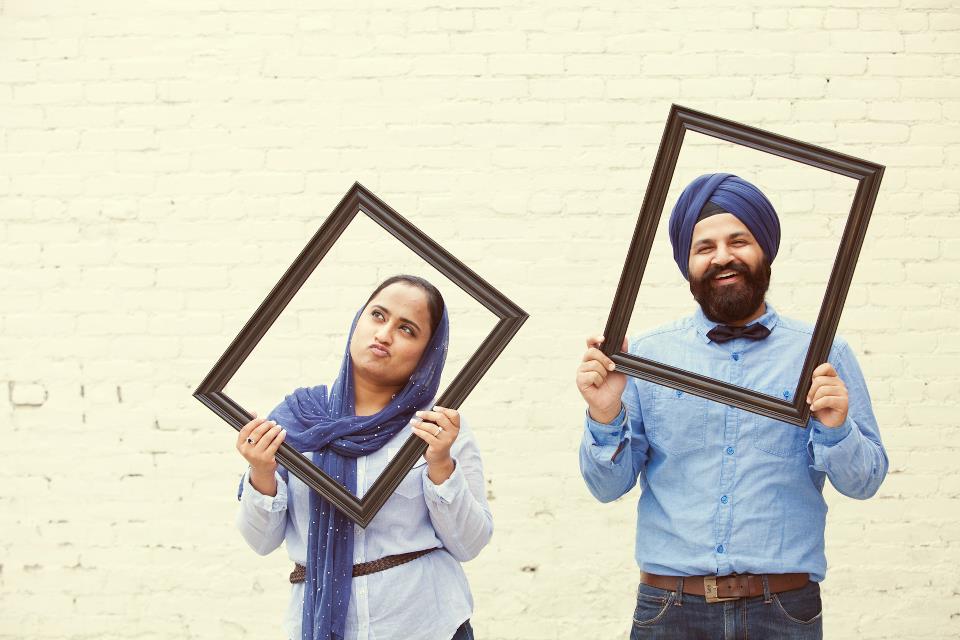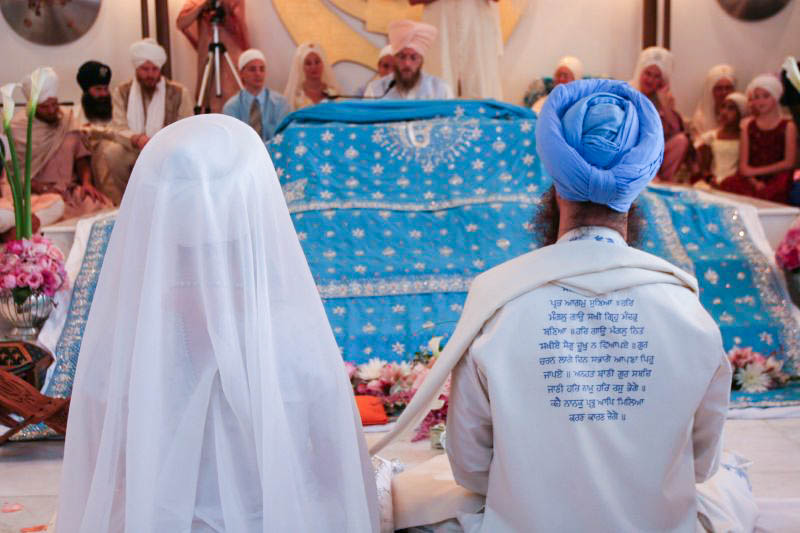By Ravjot Kaur
When I was younger, I would constantly overhear older sangat members at the Gurdwara doing “gup-shup” (small-talk) about us younger Kaurs and Singhs. While we would be focused on playing sports or reading books, the elders were concerned about the way we looked, more importantly— our skin complexion.
I didn’t think much about the way I looked until it was constantly talked about in every setting I was in, whether it was at a wedding reception or in the langar hall. But this talk seemed at odds with what I was learning at Gurdwara and reading in books. In Gurbani, we are taught that the physical beauty (maya) is always fleeting:
ਧਨੁ ਜੋਬਨੁ ਅਰੁ ਫੁਲੜਾ ਨਾਠੀਅੜੇ ਦਿਨ ਚਾਰਿ ॥
dhan joban ar fulaRaa naaTheeaRe dhin chaar ||
Wealth, youth, and flower are guests for only a few days (Guru Nanak Sahib, 23).
ਰਾਜ ਕਪਟੰ ਰੂਪ ਕਪਟੰ ਧਨ ਕਪਟੰ ਕੁਲ ਗਰਬਤਹ ॥
raaj kapaTa(n) roop kapaTa(n) dhan kapaTa(n) kul garabateh ||
Pride of power, beauty, wealth, and ancestry— are all fraudulent (Guru Arjan Sahib, 708).
ਬਿਨਸੈਗੋ ਰੂਪੁ ਦੇਖੈ ਸਭ ਦੁਨੀਆ ॥
binasaigo roop dhekhai sabh dhuneeaa ||
(This body or human) form will vanish, as the whole world watches (Bhagt Kabir Ji, 325).
If Gurbani teaches us that external beauty is always vanishing, why are we so concerned about the way we look? The concept seemed so backwards to me. Little did I know that skin-lightening brands, like Fair & Lovely, would play a huge role in the way my community perceived me. Wanting fairer skin is a deeply ingrained issue in our community which signifies latent racism, and can completely destroy the mental health of Kaurs and Singhs in our community.
The Root of “Whiter is Better”
Where did the idea that “whiter is better” come from? Part of the reason fairness of skin is so sought after is because it once signified the false narrative that you were from “upper class”, while darker skin meant you were considered “lower class”.
Dr. Lalit Khandare describes it well in in his chapter called, “Mapping Color and Caste Discrimination in Indian Society” in the book, “The Melanin Millennium: Skin Color as 21st Century International Discourse”.
“Upper caste members claim a [unjust] superior lineage by tracing their ‘genes’ to Aryans, connoting a ‘natural superiority’ over ‘Shudra’ and ‘ex-untouchables,’” he writes. Ancient Brahmin texts describe Aryans as having lighter skin color. “Dasyus or Dasas, on the contrary, are considered of lowly origin and racially inferior due to their dark skin…The cultural complex of beauty…and social status is based on skin color and caste location. Lighter skin is considered superior, whereas dark-skinned is rendered as disability, ugly, and inferior. Skin color in thus many ways is a marker of social status, inferiority intrinsic to dark skin color, and superiority associated with whiteness/lighter skin shades.”
In “India and Colorism: The Finer Nuances” Nehra Mishra says that colorism was exacerbated by British Colonialism. Mishra notes that “…lighter skin Indians were…given preference over their darker counterparts and hired more frequently.” Over time, British discrimination shaped South Asian “..association of white colored skin with the ruling class, with power, with desirability, and also with beauty.” South Asians started attaching greater societal superiority and power to the fairer skinned, which in turn dictated and shaped the desire for a westernized concept of beauty with lighter skin.
Ironically, many in the West now pay a lot of money to get tanned and bronzed. This demonstrates that we have falsely created social constructs which only reinforces existing power dynamics. These social constructs affect the way we look at ourselves, making us feel hopeless and retreat into a shell when we cannot fit in.
The Dangers of Skin Lightening Products
Clearly, the idea that lighter skin equates to power is deeply rooted from a colonialist mentality that links whiteness to power. This serves as a breeding ground for something called “shadeism” or “colorism”. Similar to racism, shadeism is a form of intra-racial discrimination based on skin color. What seems to sting the most is that while we acknowledge discrimination against us from those outside of our communities, we are in denial about the discrimination we inflict upon our own community.
One of the most obvious signs of shadeism stems from Indian beauty industries like Fair & Lovely. This brand, and other related skin-lightening brands, have undergone technological advances and can now provide the “perfect” fair face for women and men. What has not changed, however, is the basis of the product’s marketing campaign: that fairness of skin equates to loveliness of personality.
Not only do these products stem from obvious prejudices like shadeism and classism, they also completely destroy the person’s natural melanin production. Although not all skin-lightening products are illegal, many brands use ingredients such as mercury and hydroquinone— which with prolonged use are linked to poisoning, skin damage, and liver malfunction. In 2017, researchers found that 16 female patients who had a history of prolonged use of skin-lightening products were diagnosed with chronic mercury intoxication. Studies have also shown that Aluminum, another common ingredient in skin-lightening products, can cause specific encephalopathy that ranges from mild, such as memory loss to severe, such as dementia, seizures, coma, or death.
Taking Action
In addition to the physical toll brands like Fair & Lovely can take on your body, they can also have a more hidden effect—a psychological toll. Makers of these skin-lightening products have capitalized massively, exploiting us with messages of a more fulfilled life with lighter skin. This lowers our self-esteem, which often impacts personal and professional success.
Our Gurus taught us that sovereignty of mind, body, and spirit are crucial in a Sikh’s life. To live this gurmat life means to practice rejecting gossip (nindia and chugli), and to embrace each other’s authenticity. If someone around us is being told to “get lighter” or if they are struggling with their skin complexion and appearance, we should take the initiative to say one positive thing to them. We should replace comments about physical appearance with more meaningful statements like, “You radiate such positive energy,” or “The work you are doing is so interesting, could you tell me more about it?” These phrases mention nothing about physical appearance, and helps us recognize that we are much more than just our looks.
There are many ways to get involved with the movement of embracing your natural melanin. DARK is Beautiful is a non-profit organization which seeks to draw unjust effects of skin-color bias and spreads positive messages about self-worth. In 2014, the campaign successfully lobbied against advertisements against dark skin. As a result, a new set of advertising guidelines were put into place which eliminated discriminatory ads based on skin-complexion in India. Other campaigns like #unfairandlovely and #ColourMeRight combat colorism and encourages everyone to start a conversation about the beauty of different skin-complexions.
Looking to Gurbani
There is a big difference between maintaining healthy skin and wanting lighter skin for the sake of feeling worthy. To those who believe they are not capable of whatever you want to do because their skin is not light enough remember— the color of your skin does not define you. Your actions, your passion, and the goodness you do in the world— that is what defines you. As Gurbani mentions over and over again, what matters most is the inner-beauty that you hold:
ਜਿਤੁ ਘਟਿ ਵਸੈ ਪਾਰਬ੍ਰਹਮੁ ਸੋਈ ਸੁਹਾਵਾ ਥਾਉ ॥
jit ghaT vasai paarabraham soiee suhaavaa thaau ||
That heart, in which Paarbrahm abides, is the most Beautiful Place (Guru Arjan Sahib, 218).

Ravjot Kaur is a graduate from Wittenberg University with a degree in Kinesiology and Biology, and will be attending dental school in the fall. Since a young age, she has been fascinated with the human body, and has taken interest in body positivity through health, fitness, and skincare. Continuing to discover the connection between her interests and her Sikhi, she hopes that her writing can serve as a catalyst for meaningful conversation.
Sources:
Fair But Not So Lovely: India’s Obsession with Sikh Whitening
Fifty Shades of Shadeism: Judging Sikh Color
Characteristics of Mercury Intoxication Induced by Skin-lightening Products
The Health Effects of Aluminum Exposure
India’s Unbearable Lightness of Being
India and Colorism: The Finer Nuances
Mapping Color and Caste Discrimination in Indian Society
#unfairandlovely: A new social campaign celebrates dark skin





No Comments